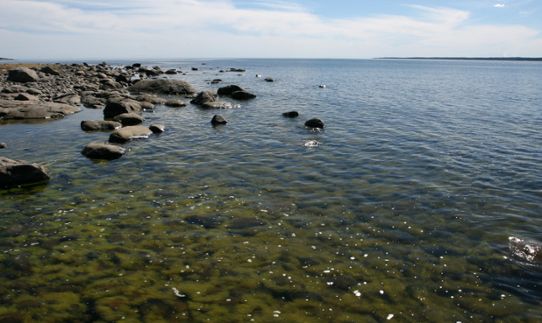At first glance, the Baltic Sea region might appear to be of little interest to marine researchers who focus on the world’s oceans. The Baltic Sea is relatively shallow, has low salinity levels compared with the oceans and a narrow connection with the North Atlantic. However, this assumption couldn’t be further from the truth, according to 26 researchers from seven countries in an article in the journal Science Advances.
Helén Andersson, now head of the Research Department at the Swedish Meteorological and Hydrological Institute (SMHI), is one of eight Swedish co-authors of the study.
“Development in the Baltic Sea can help us predict future global changes. The brackish waters of the Baltic Sea and the special conditions associated with this inland sea have caused many changes to become concentrated and occur at a faster rate than they would have done if the sea had different conditions, and had not been an inland sea. In this study, we have seen that this knowledge could prove to be very useful in the work relating to other coastal regions bordering the world’s oceans,” said Helén Andersson.
According to the research team, the Baltic Sea may be acting as a kind of time machine that could help marine researchers to better predict future global changes. The small volume of water in the inland sea and the slow rate of water exchange with the North Atlantic means that effects are amplified and many processes and interactions take place faster than in other marine regions.

Extreme pressure on the Baltic Sea region
The world’s oceans have warmed by around 0.5°C over the past 30 years, while the water in the Baltic Sea has warmed by 1.5°C. Another change that has been observed over the same period is the ten-fold increase in anoxic bottoms in the deeper parts of the Baltic Sea compared with marine areas globally.
“Similarly, we can also observe the level of acidification in the Baltic Sea through the lower pH values, which regularly drop to levels that are only predicted to occur in the larger oceans over the next century,” said Kerstin Johannesson, professor and marine researcher at the University of Gothenburg and one of the authors behind the study.
The extreme values in the Baltic Sea partly stem from the fact that nine countries directly border the sea. All nine of these countries are highly industrialised and densely populated. Intensive agriculture and strong pressure from fisheries also have an impact.
Improvements through monitoring and cooperation
However, the picture is not entirely bleak. The Baltic Sea is one of the world’s most heavily monitored marine areas, with scientific observations and measurements since the early 1900s. There is also a strong tradition of scientific cooperation between many of the countries across the region.
Since the 1980s, the countries surrounding the Baltic Sea have succeeded in reducing the nutrient load on the sea and have reduced overfishing. Populations of predators such as sea eagles have ceased to decline as a result of joint measures. The improvements have been brought about through binding agreements between the countries.
The Baltic Sea as a model region
Overfishing, warming, acidification, eutrophication, anoxic bottoms and the intensive use of coastal waters are phenomena that can be observed in marine regions around the world.
“Because the changes have been particularly dramatic in the Baltic Sea and because some of the problems have started to be tackled successfully there, the region can be seen as a model region for what can be expected and what could be done elsewhere to address future challenges,” said Annica Sandström, professor of political science at Luleå University of Technology, who also participated in the study.